Their buildings say it all.
Fort Worth’s three art museums — the Kimbell, the Carter, and the Modern — are gifts to the city from the rich and powerful. Each museum is the work of a world-famous architect — Louis Kahn, Tadao Ando, Philip Johnson. British travel writer Jan Morris described the lush green slope of land the three museums stand on as “the Valley of the Millionaires.”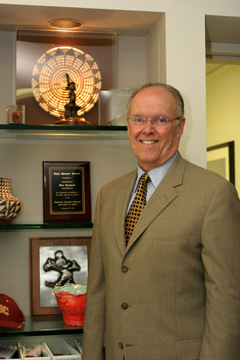 South of that grandeur, situated between noisy Montgomery Street and the rear end of Will Rogers complex, in a building as boring as the boxy, yellow-brick public schools of the 1950s, is the Fort Worth Museum of Science and History. Although the museum continues to receive money from wealthy patrons and grants from local and national foundations, it was largely funded by sweat equity and small donations from thousands of ordinary people in Fort Worth. This plain-vanilla museum is Fort Worth’s in a way that its fancier neighbors are not.
South of that grandeur, situated between noisy Montgomery Street and the rear end of Will Rogers complex, in a building as boring as the boxy, yellow-brick public schools of the 1950s, is the Fort Worth Museum of Science and History. Although the museum continues to receive money from wealthy patrons and grants from local and national foundations, it was largely funded by sweat equity and small donations from thousands of ordinary people in Fort Worth. This plain-vanilla museum is Fort Worth’s in a way that its fancier neighbors are not.
Willed into being as the Fort Worth Children’s Museum by a bunch of schoolmarms with little clout but plenty of gumption, it began as two classrooms in a local elementary school in 1945. The most beloved of its founders was Charlie Mary Noble — “Miss Charlie,” who taught mathematics to school kids for more than 40 years, celestial navigation to Navy pilots during World War II, and astronomy to children as late as 1957, when her eyesight was so dim that she could no longer see the stars and planets she was explaining so eloquently.
Along the way, the museum became the first institution in the Cultural District and founded a school that became part of a deep-rooted tradition in Fort Worth. By the 1980s, parents were so determined to enroll their children in its superb science classes that they stood in line outside the museum all night to sign them up. Four generations of Fort Worth pre-schoolers have begun their educations there, coming away with an affection for the place so strong that there is an informal alumni association.
After the museum changed its name and became the Museum of Science and History, it began in earnest to collect materials from every period of Fort Worth’s past, from spurs and saddles to letters, photos, and family scrapbooks, top hats, a rodeo queen’s costume —pieces of the stories about life in this part of the world. Painstakingly catalogued, the material formed the basis of occasional exhibits that told Fort Worth about itself, taught this real and dreaming city to the people who made it their hometown.
But by the 1990s, the museum had begun to decline. The city of Fort Worth had stopped sending any kind of crews to help maintain the building, accurately described as being “loved to death.” The star projector in the Noble Planetarium was so old that the museum had to buy spare parts on eBay. Although tireless science curator Jim Diffily kept money coming in by doing serious field science — real digging for dinosaurs — with the SMU paleontology department and other collaborators, the museum was living from grant to grant, like Tarzan swinging from vine to vine in the jungle. The museum’s original exhibits and those it put together with other institutions were generally very good but also few and far between. Steadily, year by year, the museum sold off the securities it held. And it has no endowment to tide it over during hard times and to allow it to do original work without sponsors like, say, corporations, with self-promotional agendas.
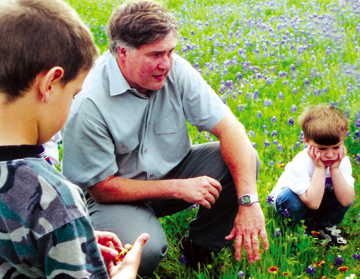 The museum’s troubles, in many ways, mirror those facing science and children’s museums around the country. Colleges, public schools, and specialized summer camps fill many of the educational niches once handled by museums. Government funding is down,, and so is attendance. Across the whole field of nonprofit learning, managers and staffers of places like museums, zoos, and aquaria are gathering at conferences to ponder the question of “what next?”
The museum’s troubles, in many ways, mirror those facing science and children’s museums around the country. Colleges, public schools, and specialized summer camps fill many of the educational niches once handled by museums. Government funding is down,, and so is attendance. Across the whole field of nonprofit learning, managers and staffers of places like museums, zoos, and aquaria are gathering at conferences to ponder the question of “what next?”
In 2002, after 26 largely successful years as president, Don Otto left the Fort Worth museum voluntarily. Neither he nor the museum were getting anywhere, he said, and it was time to move on. Two years later, the board hired his replacement — a Disney “imagineer” named Van Romans, who’d arrived in Fort Worth a couple of years earlier at the invitation of the Bass family and others.
The museum is now a veritable tornado of changes and plans. Romans has ended the yearly deficits, and the board has announced plans to demolish the museum’s current building (except for the Omni Theater), and build a new $65 million facility, to be designed by world-quality architects and to incorporate new collections, including those of the Texas Cattle Raisers’ Association.
But what direction will the tornado take? Some in town worry about the possible Disneyfication of the museum and indeed of Fort Worth’s historic parts in general. Will the museum again take the lead in putting Fort Worth’s history on display? Will it be a serious institution that does reputable science and excellent exhibits and that continues the tradition of teaching those descendants of Miss Charlie’s students? Or will it become simply a place where Fort Worth rich folks promote the bidnesses that made their millions, a la Ramona Bass’ Texas Wild! (but mostly stuffed and dead) exhibit at the Fort Worth Zoo?
What became the Fort Worth Museum of Science and History was the product of a conspiracy of women — specifically, a 1939 proposal from the Fort Worth Council of Administrative Women in Education — in a day when gender made a huge difference. Most of them worked for Fort Worth public schools; with the exception of the somewhat grand Miss Irma L. Kuykendall, they had no social status to speak of and no money of their own to turn their proposal into a reality. But they shared a steely determination to make Fort Worth a smarter and more civilized town, although sometimes they couldn’t say that out loud. Because they arrived for formal meetings wearing Serious Hats, many self-important men mistook them for sweet little ladies. Two years later, when the Fort Worth Children’s Museum was chartered by the state of Texas, all eight signers of the incorporation papers were women, including Mrs. C.D. Reimers and Mrs. D.L. Johnson — identified only by their husbands’ initials and last names.
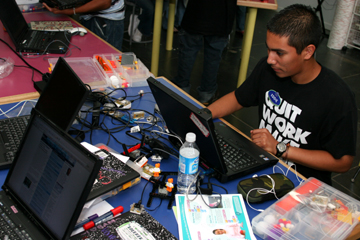 The museum gained an actual street address in 1945, when it began operating in two classrooms in De Zavala Elementary School. In 1947, it moved into a huge Victorian house on Summit Avenue. That’s where the museum school was born, as well as its first planetarium — in a tent in the backyard. In 1947, Miss Charlie organized the museum’s Junior Astronomy Club and was instrumental in organizing similar clubs around the world. In 1956, she was the first woman to receive the Astronomical League of America’s annual award for outstanding achievements in astronomy. The museum’s Noble Planetarium was named for her, but after it opened to the public, museum officials wouldn’t let her touch the controls of the sky projector. One dark night she let herself into the museum (she wouldn’t say how) and was apprehended around 2 a.m., enjoying her planetarium in private. She died in 1959 at the age of 82, but the story is that her ghost attended Junior Astronomy Club meetings for some years afterward.
The museum gained an actual street address in 1945, when it began operating in two classrooms in De Zavala Elementary School. In 1947, it moved into a huge Victorian house on Summit Avenue. That’s where the museum school was born, as well as its first planetarium — in a tent in the backyard. In 1947, Miss Charlie organized the museum’s Junior Astronomy Club and was instrumental in organizing similar clubs around the world. In 1956, she was the first woman to receive the Astronomical League of America’s annual award for outstanding achievements in astronomy. The museum’s Noble Planetarium was named for her, but after it opened to the public, museum officials wouldn’t let her touch the controls of the sky projector. One dark night she let herself into the museum (she wouldn’t say how) and was apprehended around 2 a.m., enjoying her planetarium in private. She died in 1959 at the age of 82, but the story is that her ghost attended Junior Astronomy Club meetings for some years afterward.
By World War II, Fort Worth’s population had more than tripled, and the Children’s Museum was slowly lifted up and forward on the first waves of the postwar baby boom. Two municipal bond issues paid for the museum’s yellow-brick building, which opened in 1956. Then in 1968, the museum changed its name to the Fort Worth Museum of Science and History and began the collections that gained it national accreditation.
As the art museums in the Valley of the Millionaires grew and became more famous as showplaces for the largesse of their patrons (you and the whole world know you’ve done something significant when The New York Times writes about the masterpieces your money bought), the plain-Jane museum on Montgomery Street had to scramble harder to raise money for its work.
But the last time the museum did anything serious to live up to the “history” part of its name was in 1983, when the permanent “150 Years of Fort Worth” exhibit opened. Hidden away on the first floor of Fire Station No. 1 on Commerce Street downtown, it is an excellent outline for dozens of serious, fascinating projects about the history of Fort Worth and Texas. But in 23 years, the museum has not followed up with anything even an eighth as ambitious — despite its vast and carefully catalogued collections of historical artifacts. Beyond that, the museum, if it wanted, could draw on the University of Texas at Arlington library’s special collections department, the public library, and the Amon Carter Museum just down the street — not to mention the collections of four local historical societies and numerous private individuals.
The same year as that exhibit opened, the museum christened its Omni Theater, the only IMAX theater in Texas at the time. The theater was the museum’s cash cow for next 15 years or so, until two other IMAX theaters opened in Dallas. Revenues have fallen each year since.
The last time crowds lined up around the pale yellow building for an exhibit was in late 2003 and early 2004, for September 11: Bearing Witness to History, the gripping collection about the recent history that so changed America, put together by the National Museum of American History at the Smithsonian.
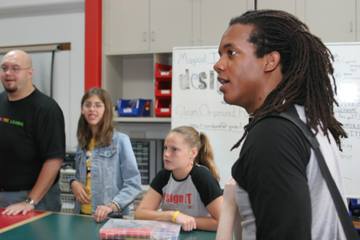 Van Romans is cutting through the air in front of him with his hands. “This place is about (Slice!) learning, (Slice!) learning and (Chop! Chop! Chop!) learning!” he says. It’s a Monday morning in his office, and so far, he’s making all the right noises.
Van Romans is cutting through the air in front of him with his hands. “This place is about (Slice!) learning, (Slice!) learning and (Chop! Chop! Chop!) learning!” he says. It’s a Monday morning in his office, and so far, he’s making all the right noises.
He’s using his hands and words now, shaping images in the air as he talks about plans for the museum’s transformation, changes that will “bring it into the 21st century.” It is going to do exciting exhibits in partnership with top-flight museums. It is going to build an endowment. It is going to reach out to the community, expanding the museum school’s offerings, expanding teaching services in the poor parts of town. The new building will house and exhibit the collections of the Cattle Raisers’ Association. Oilman Charlie Moncrief has been talking about raising money for the museum to mount permanent exhibits laying out the history of oil exploration and the evolution of energy industries. Modern marketing techniques will bring in visitors; the museum will create “immersive as well as passive exhibits.”
Romans is a natural charmer, intelligent, graceful and fluent, talking with a gee-whiz enthusiasm that is sincere and also highly polished by years of making Disney-style pitches for his ideas. His resumé is impressive: He earned an MFA degree from the University of California and taught college-level courses on exhibit design and museum management for more than 30 years. He has been a consultant for the Smithsonian and other authentic museums in the United States and for museums in New Zealand, Venezuela, and China.
Eventually, he went to work for Walt Disney Imagineering, the research and development company staffed by artists, architects, writers, designers, and other creative people with a practical bent who, as a Disney press release says, are “responsible for the creation — from concept initiation through installation — of all Disney resorts, theme parks and attractions, real estate developments, regional entertainment venues, and new media projects.” The imagineers invented the “audio-animatronic characters” that replaced actors in Disney theme parks — an Abraham Lincoln who could deliver the Gettysburg Address for 14 hours straight without requiring either bathroom breaks or union wage scales.
And that brings us to another of the Bass family’s matings of what’s good for Fort Worth with what’s good for them.
Romans was vice president for cultural affairs at Disney imagineering when he took a pay cut and early retirement to come to Fort Worth. What was the lure? “Fort Worth was calling,” he said wistfully. Well, members of the Bass family, their employees, and their friends were.
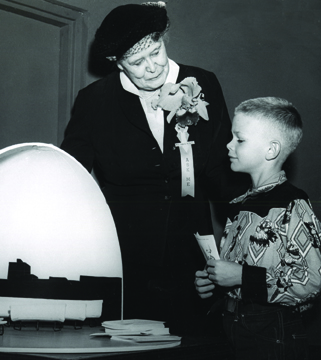 Like other Imagineers, Romans sometimes was “loaned out” to work as a consultant on projects outside the Wonderful World. That’s how he came to the attention of the Basses. By the 1980s, the Fort Worth family had moved from mere inherited wealth to riches beyond the dreams of avarice when Richard Rainwater, their financial manager of genius, invested them in the Walt Disney Company at exactly the right moment. At one point, the Basses were the largest stockholders in the company.
Like other Imagineers, Romans sometimes was “loaned out” to work as a consultant on projects outside the Wonderful World. That’s how he came to the attention of the Basses. By the 1980s, the Fort Worth family had moved from mere inherited wealth to riches beyond the dreams of avarice when Richard Rainwater, their financial manager of genius, invested them in the Walt Disney Company at exactly the right moment. At one point, the Basses were the largest stockholders in the company.
With the Basses as primary sponsors, Romans worked on two projects here that turned out to be auditions for the job of president of the science museum — the “Texas Wild!” addition to the Fort Worth Zoo and then the Cowgirl Hall of Fame and Museum. Romans is careful to say that he served as a consultant only during the early, conceptual stages of those projects and that he had no part in determining the factual content of either. In other words (but not his), he’s not responsible for how Ramona Bass, in the Texas Wild! addition, bent hard science into an apology for the oil and gas industry’s “positive” role in preserving natural habitats or how the Hall of Fame has fuzzed the differences between actual ranch women and cowgirls as show-business inventions.
One reason for asking hard questions about the Fort Worth Museum of Science and History’s future is where it is located — smack dab in the middle of private and public development projects that will transform the land between Montgomery Street and University Drive into — what?
The Cowgirl Museum and Texas Wild!, regardless of their other merits, fit in neatly with development projects that Bass family companies and charities began in the late 1980s with the Sundance Square projects around Main Street in downtown. Old buildings that were still standing because they weren’t worth tearing down were rebuilt as restaurants and shops for luxury goods and tourist-ware. The combined effect of Bassification was that of a Western heritage theme park — authentic in places, but with all the rough edges tucked in, cleaner, nicer, and less interesting than old downtown Fort Worth had ever been. Now Sundance Square is the center of a large entertainment, business, and residential development district, patrolled by the Basses’ private security guards. Japanese and German tourists imagine that they are in a wild-and-woolly Cowtown — and downtown’s revitalization is considered a major success by other cities. Yee-ha!
So for anyone who knows Fort Worth, the big questions are: Will the people who brought Romans to town back him up if he doesn’t do exactly what they already think is best for Fort Worth? Will he be allowed to keep the museum on a human scale, a place where everyone is welcome and treated as equals? Can he sustain interest among the wealthy without becoming captured by galloping Big-Deal-ism? The justified boast after the Kimbell Museum opened here was, “Small and superb is for Fort Worth. Big and mediocre is for Dallas.”
Romans says that a significant section of the museum’s new building will be devoted to history, especially to local history. If the museum gets serious about Fort Worth’s history — doing it honestly, incorporating all the grit, absurdity, heartbreak, folly, and poetry of life here — it’s likely that tourists will line up to see something they can find nowhere else. If you know what you’re looking at, Fort Worth is a fascinating place.
Romans’ personal and intellectual integrity seem to be a given. He passed the first real public test in that subject with flying colors last year. The New York Times reported that many museums in the United States were taking a pass on IMAX films that contradicted the beliefs of Christian fundamentalists about the origins of Earth and its creatures. One of those museums was the Fort Worth Museum of Science and History, partly in response to members of test audiences who found Volcanoes of the Deep Sea objectionable —”blasphemous” — and because it wasn’t drawing crowds in places where it was already showing. In an essay in the Fort Worth Star-Telegram, Romans and museum board chairman Robert M. Lansford explained that they were reversing that decision. Theirs was a science museum, and they would show the film as soon as possible.
And for those who, therefore, are worried about whether promises will be kept once the old building is torn down and someone gets some Wild West idea, Romans is emphatic: The new museum will be built “right here, on this piece of city land. This is sacred ground!” All of the estimated $65 million necessary for the new building will be raised before the old building is demolished, he said, and about half that has already been committed. The new building will be designed by world-famous architects, Mexico City-based Ricardo and Victor Legorreta.
The museum president is also quick to point out that good things are still going on, even though they are not visible to casual visitors who see only the worn-out educational areas and limited traveling exhibits. The museum school, off-site projects, scientific work, summer sessions that teach science teachers how science is done — all that will continue and be strengthened, he said.
Like the work that Abdur-Rahee Saafir is doing for instance. He’s 25 and the entire teaching staff for the museum’s after-school classes at the North Side Boys and Girls Club.
The children who gather around him are having fun as he shows them how to make an electromagnet.
“So you tape the hearing aid batteries on top of each other so that the round bumps face the same way. That’s your electrical power. … You tape that to your power source this way, and you tape the magnet on the other end. …”
In 15 minutes, the kids are tossing the gizmos they’ve made up to the struts that brace the metal walls and ceiling of the storage room where the class is held.
“Saafir!” says a girl in a worn blue dress. “Mine stuck! And the light’s still on. Will it stay stuck?”
He answers their questions exactly, and with questions that steer them toward other questions. He doesn’t explain that some of his teaching tools were developed at MIT and that these classes are supported by the National Science Foundation.
“I love this work,” Saafir says. “I grew up at the museum.”
Miss Charlie’s ghost, no doubt, would be pleased. And she’s probably not going away, either, until she sees what rises from the rubble of her beloved plain-vanilla place of learning.
Veteran Texas journalist Samuel Hudson can be reached at samhudson@earthlink.net.











